Image
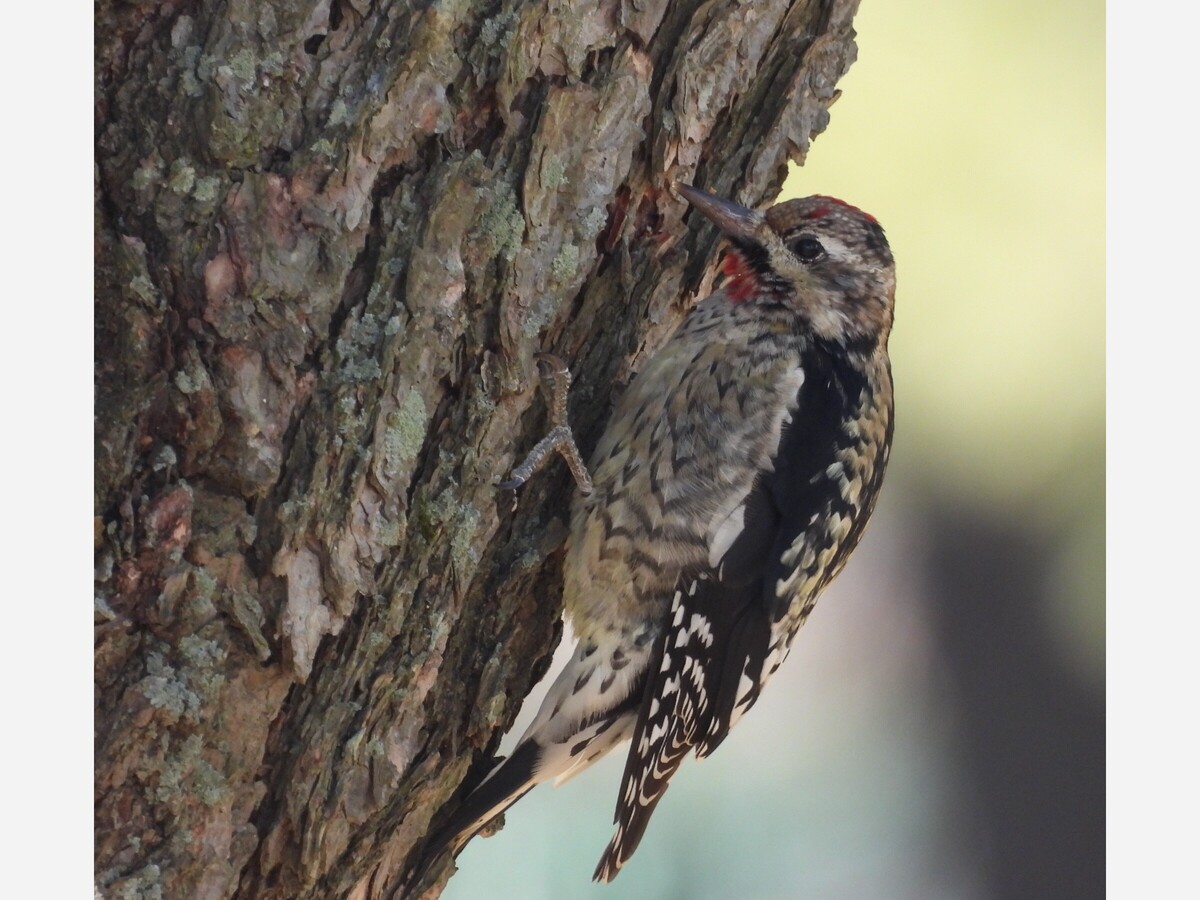
by Mike Strzelecki*
In past columns, I have featured a different bird to write about each month. Here, I plan to change it up and instead discuss a specific trait common to many birds: camouflage.
Camouflaging is a tricky attribute for birds. Birds want to be camouflaged to protect themselves against predators. However, they also want to be colorful and splashy to announce their presence to the opposite sex during breeding. They have to find that fine line between the two. As a general rule, female birds tend to be more camouflaged than males so they are not seen when sitting on nests. Male birds are usually more colorful and resplendent so that they can “show their stuff” when courting female birds.
How birds camouflage can sometimes be unique and creative. In my time as a bird photographer, I have come across some interesting cases of camouflaging. I thought I would share a few below.
This green heron was photographed at a park in downtown Baltimore. It feeds throughout the day in a stagnant pond that is carpeted with colorful green and drab red water lilies. If you notice, the green heron takes on the same color as the various water lilies, and often disappears into the colorful pond matting. Moreso, as seen in this picture, it can flatten its body low to the water to actually resemble a water lily to hide from eagles and owls and other overhead predators.

The stunningly cute chestnut-sided warbler moves through the Boyertown area in spring, and has a splashy color display around its face. This picture, also taken in Baltimore, shows the warbler eating berries from a mulberry bush, one of its favorite meals. If you notice, unripe mulberries are yellowish, partially ripened mulberries are red, and ripe ones are almost completely black. Now look at the color patterns around the warbler’s face. It displays the three colors of the ripening mulberry and the spots are about the same size as mulberries. Have chestnut-sided warblers evolved to disappear into mulberry bushes? I have no idea. But spotting this tiny warbler in this tree was challenging due to its unique facial coloration pattern.
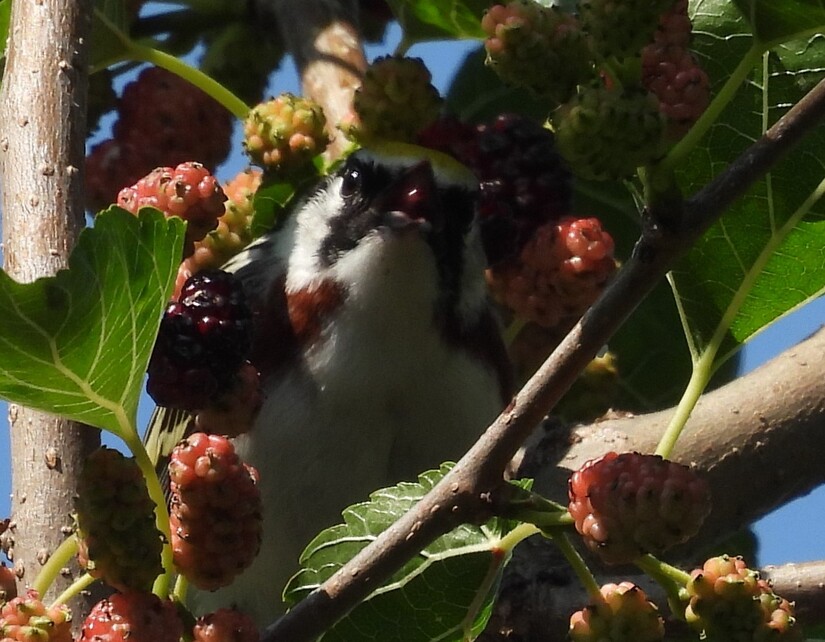
I photographed this calliope hummingbird at an actual hummingbird ranch in southern Arizona (there really are such things and they attract birders from around the world). The camouflage is straight-up simple. Its chin takes on the same color as the flowers on which it feeds and its secondary olive and white colors match those of the leaves of the flowers. The calliope hummingbird flashes so brightly when it flies that camouflage is really tough for this little flitterer.
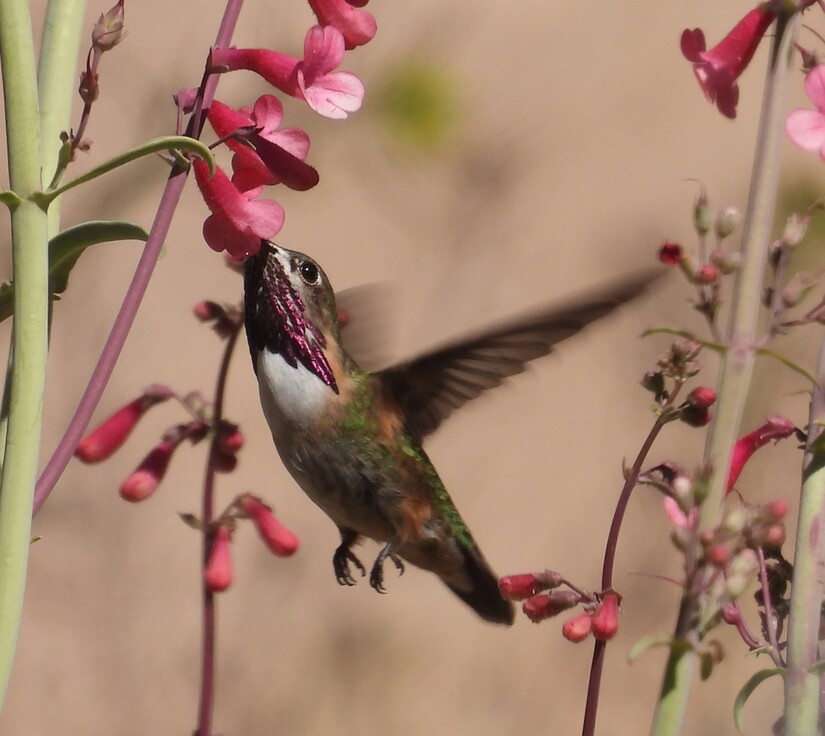
Least bitterns are tall, thin wading birds that feed and hide in slackwater reeds on the water’s edge. They blend in with the reeds so deftly, they are rarely seen by birders. Often, if a predator comes by, they will reach their chin high in the air to make themselves even reedier. They are the same color as the reeds, making spotting them even tougher. This least bittern was photographed at the same pond in downtown Baltimore as the green heron above.
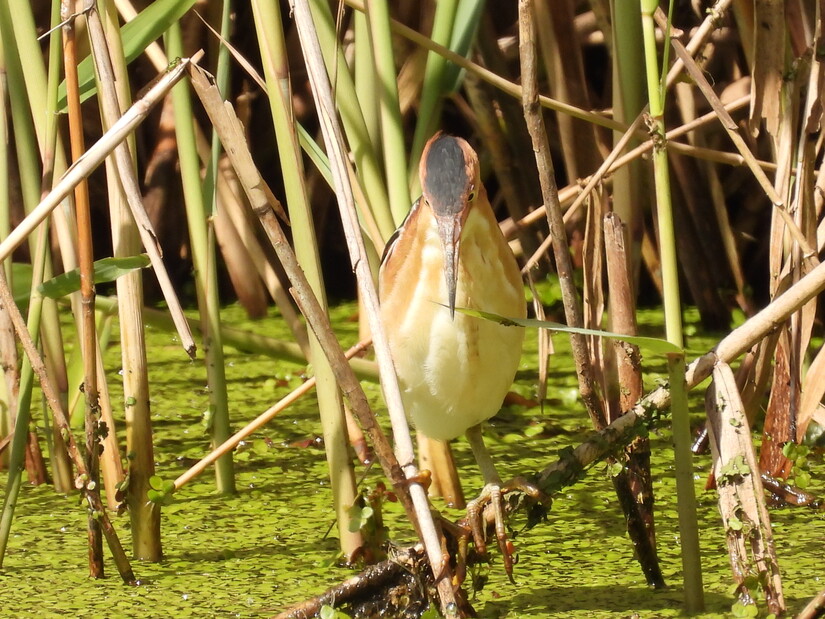
Eastern screech owls dwell in thick forests and hide away in gaping holes of aged trees. They are often so well-camouflaged, they are sometimes not noticed when looking straight at them. This particular eastern screech owl lives at a wildlife refuge in southern Maryland, and I needed more observant birders to point it out to me.
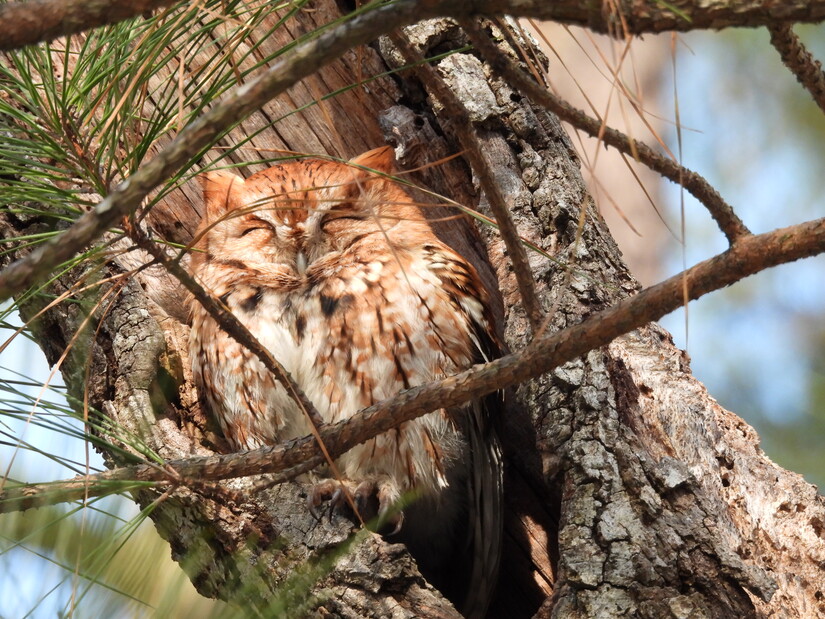
Prairie warblers are bright yellow songbirds with a black stripe pattern around the face. In spring, come dinner time, they gravitate to willow trees such as the one in the photo which are thick with yellow buds that hang down and provide perfect cover. The virtually disappear into the willows. This prairie warbler was photographed in downtown Baltimore.
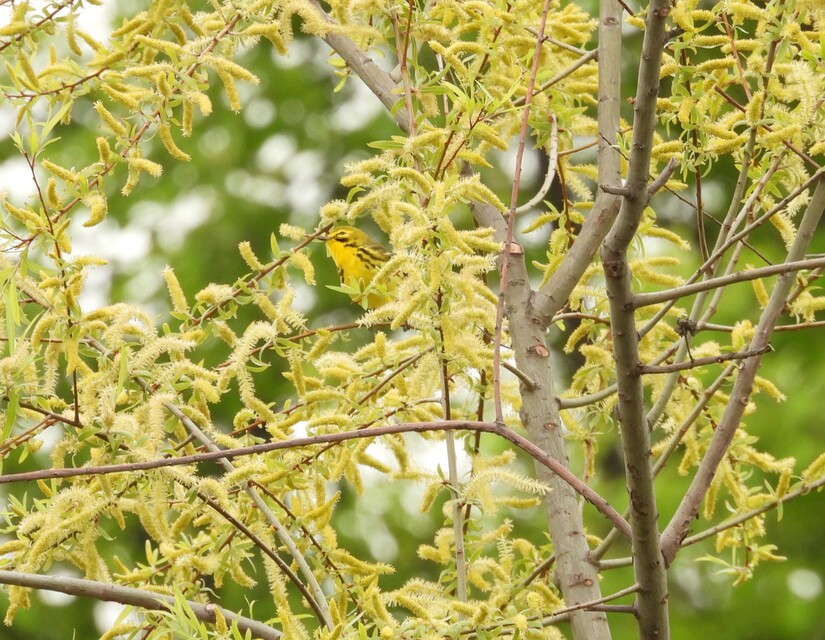
The woodcock is an oddly configured bird with extended proboscis that spends its entire existence on the ground, buried in leaves and low plants of different shades of browns and tans. As can clearly be seen from this picture, its feather coloration pattern could not be better suited to hiding in fallen leaves and autumn ground plants. This woodcock was photographed in the planter of a rowhouse in downtown Baltimore.
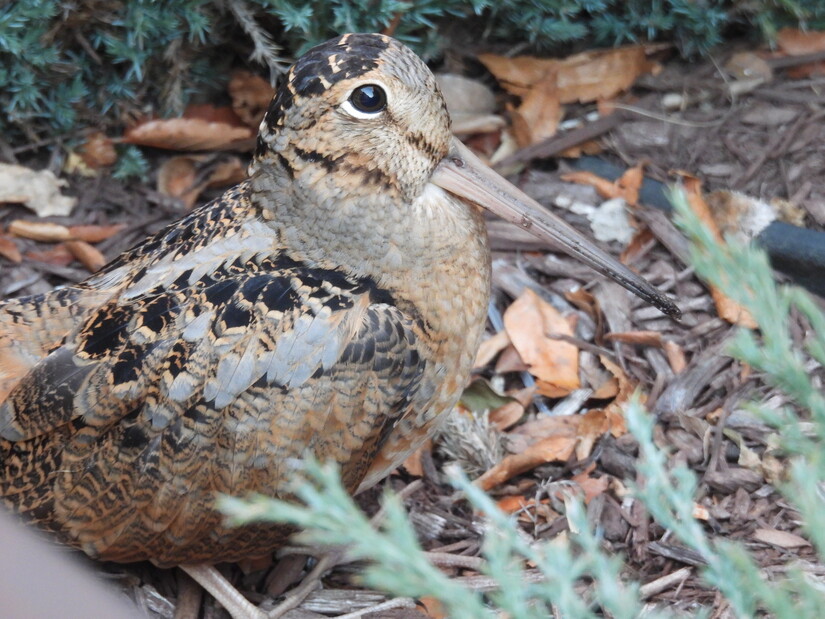
Snowy owls spend summers breeding in the arctic tundra regions and often spend winters residing in warmer climes, sometimes in the mid-Atlantic region. They may stick out like a sore thumb when seen in our area, but their solid white coloration is perfectly suited for their stints in the Arctic. Snowy owls rarely hide like other owls, but rather perch and breed in the wide open, often on expansive tracts of ice or tundra snow. The solid white color allows them to blend into the arctic snow and mask them from predators like foxes and wolves. It also protects them from being seen by various gull species that go after their eggs. If you look closely at this picture, you will see a splotch of dulled blood on the owl’s chest, just above its barred markings. This owl just finished eating a hearty lunch (probably an unsuspecting duck) and was enjoying a full-stomach nap. This snowy owl was photographed in a neighborhood on the eastern shore of Maryland.
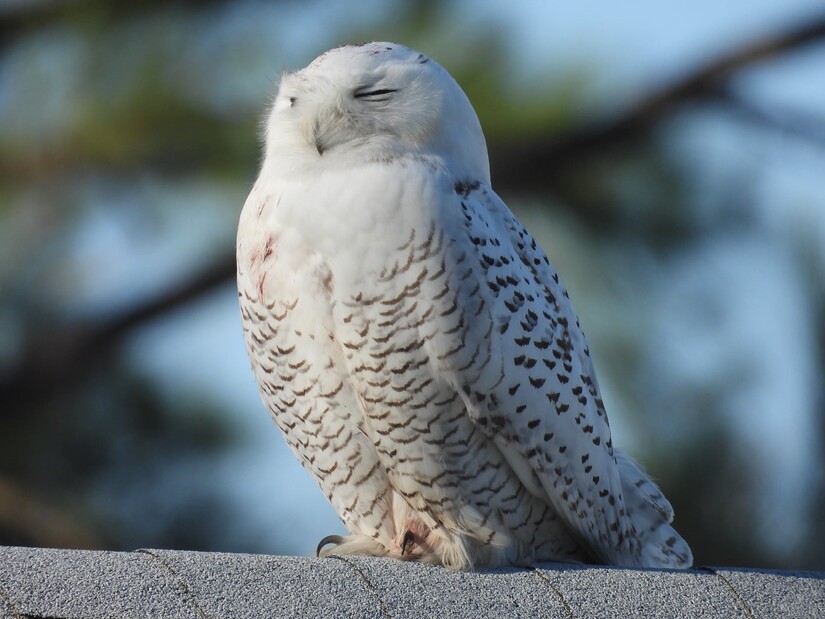
Lots of birds use trees for protection and to feed around. Several bird species spend their existence clinging tightly to tree trunks, picking and digging for bugs in the bark. Below are pictures of a yellow-bellied sapsucker and a brown creeper. Both species work the tree bark and both almost disappear into the bark when viewed from behind, thanks to their well-camouflaged back feathers. Birders rely mostly on movement to spot these birds; when they are still on a tree trunk, they are rarely seen. These birds were photographed at an environmental center on the eastern shore of Maryland.
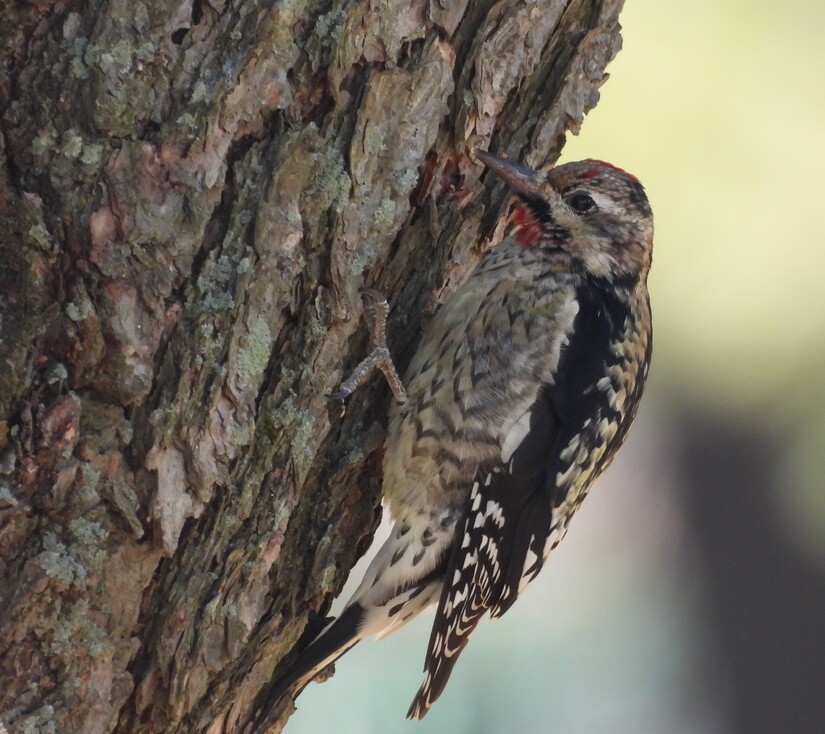
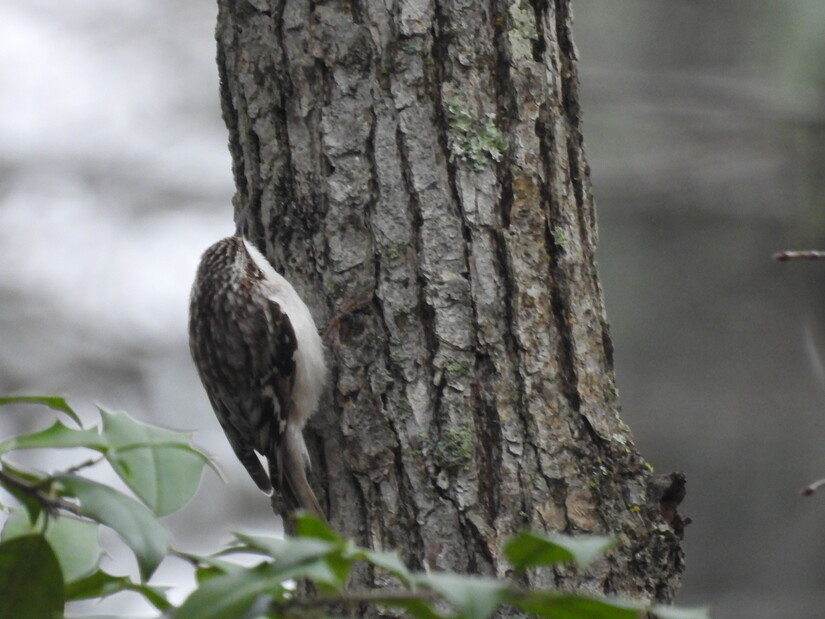
* Mike Strzelecki is a freelance travel and outdoor writer, and 1981 graduate of Boyertown Area Senior High School. He writes from his house in Baltimore, Maryland. In his spare time, he joins his wife on adventures around the country observing and photographing birds.